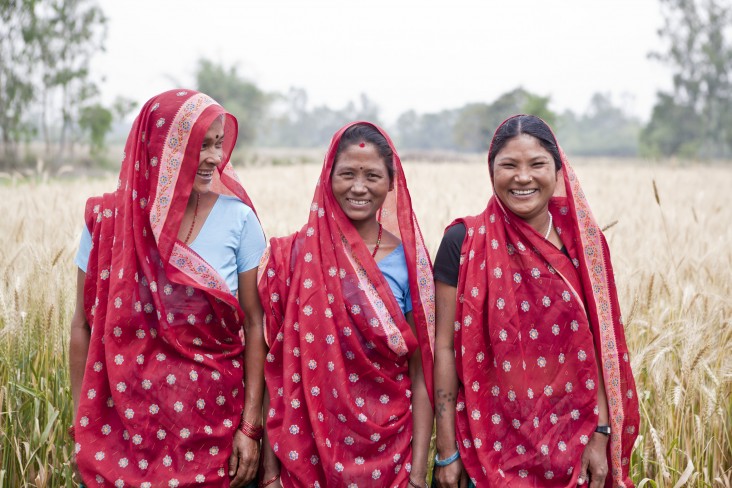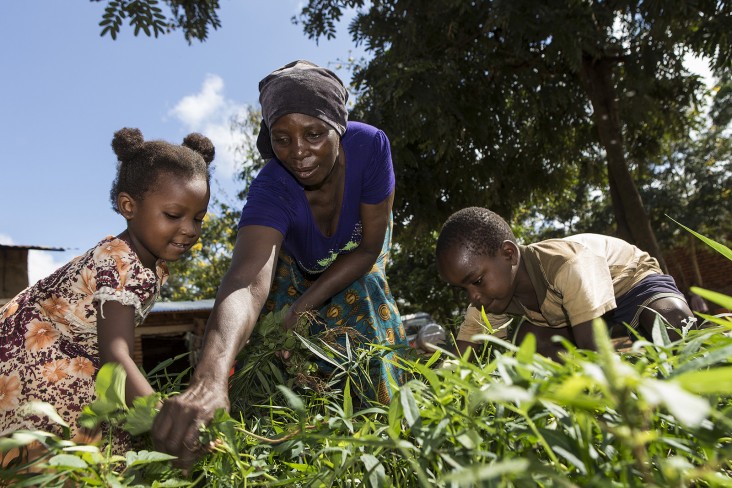- What We Do
- Agriculture and Food Security
- Democracy, Human Rights and Governance
- Economic Growth and Trade
- Education
- Ending Extreme Poverty
- Environment and Global Climate Change
- Gender Equality and Women's Empowerment
- Global Health
- Water and Sanitation
- Working in Crises and Conflict
- U.S. Global Development Lab

If we’re going to end hunger in our lifetimes, we need to empower women. Across developing countries, they make up 43 percent of the agricultural labor force.
Many of them are smallholder farmers, and from paid employment to trade and marketing, women participate in all aspects of rural life. They raise crops and animals, collect water and wood for fuel, and care for family members. And women are more likely to reinvest their income back into their families to improve education, nutrition and health.
Yet, women farmers are not as productive as men due to less access to land, markets, farming technologies, fertilizer, credit and training. That’s a lot of untapped potential. We know that if women had equal access to opportunities and resources, they could increase their yields and feed more hungry people in the world. In fact, if women had the same access to productive resources as men, they could increase their farm yields by 20-30 percent, feeding an additional 150 million people.
At USAID, we know that when women flourish, families and communities do too. That’s why we’re empowering women by:
- Promoting women’s leadership in agriculture
- Fostering policy changes that increase women’s land ownership
- Strengthening women’s access to financial services
In 2010, the U.S. Government launched its global hunger and food security initiative, Feed the Future. At the heart of Feed the Future’s strategy is an understanding that women play a vital role in advancing agricultural development and food security, helping to reduce poverty and promote global stability. Through the initiative, women farmers are provided training and opportunities to adopt new agricultural technologies in order to increase their productivity, reduce unpaid work and improve their families’ nutritional status.

To build the evidence base around what works for empowering women in agriculture -- and to make empowerment a tangible, measurable concept we could work towards -- USAID developed the Women’s Empowerment in Agriculture Index, (WEAI), with the International Food Policy Research Institute, and Oxford Poverty and Human Development Initiative. The WEAI provides a direct measure of women’s empowerment and inclusion in the agriculture sector by tracking data on women’s decision-making, access to and control over resources, leadership opportunities and time use, particularly relative to men in their households.
The WEAI team has since conducted a baseline survey in 13 countries and is collecting another round of data to track changes in women’s empowerment where Feed the Future works as we continue to refine and adapt this innovative tool. With data from the WEAI, we are adjusting our programs to better promote women’s empowerment in agriculture and are designing new programs that address the greatest constraints to empowerment in agriculture that women in developing countries face.
USAID, primarily through its leadership of the U.S. Government’s Feed the Future initiative, supports programs to improve women’s empowerment in agriculture:
The African Women in Agricultural Research and Development fellowship program, which provides professional development opportunities for African women in agricultural science to strengthen their research and leadership skills.
The Innovations in Gender Equality to Promote Household Food Security program, which provides grants for projects such as:
- Community-centered technology design training for smallholder farmer groups in Tanzania. Trainees, the majority of whom are women, develop prototypes that address challenges they face in agriculture and receive in-depth coaching.
- Farmer Field Schools, which provide a forum for men and women in Tanzania to discuss issues such as gender-based violence in addition to sharing agricultural best practices.
The Integrating Gender and Nutrition within Agriculture Extension Services, which helps build more gender-sensitive and nutrition-enhancing agricultural extension and advisory services across a range of providers, including those in the public, private and non-governmental sectors.
Resources
Infographic: The Global State of Agriculture [PDF, 299K]
Feed the Future Gender Fact Sheet
The Women’s Empowerment in Agriculture Index
Blog: Does Gender Equality Matter in Agriculture? Yes! Here’s Why.







Comment
Make a general inquiry or suggest an improvement.